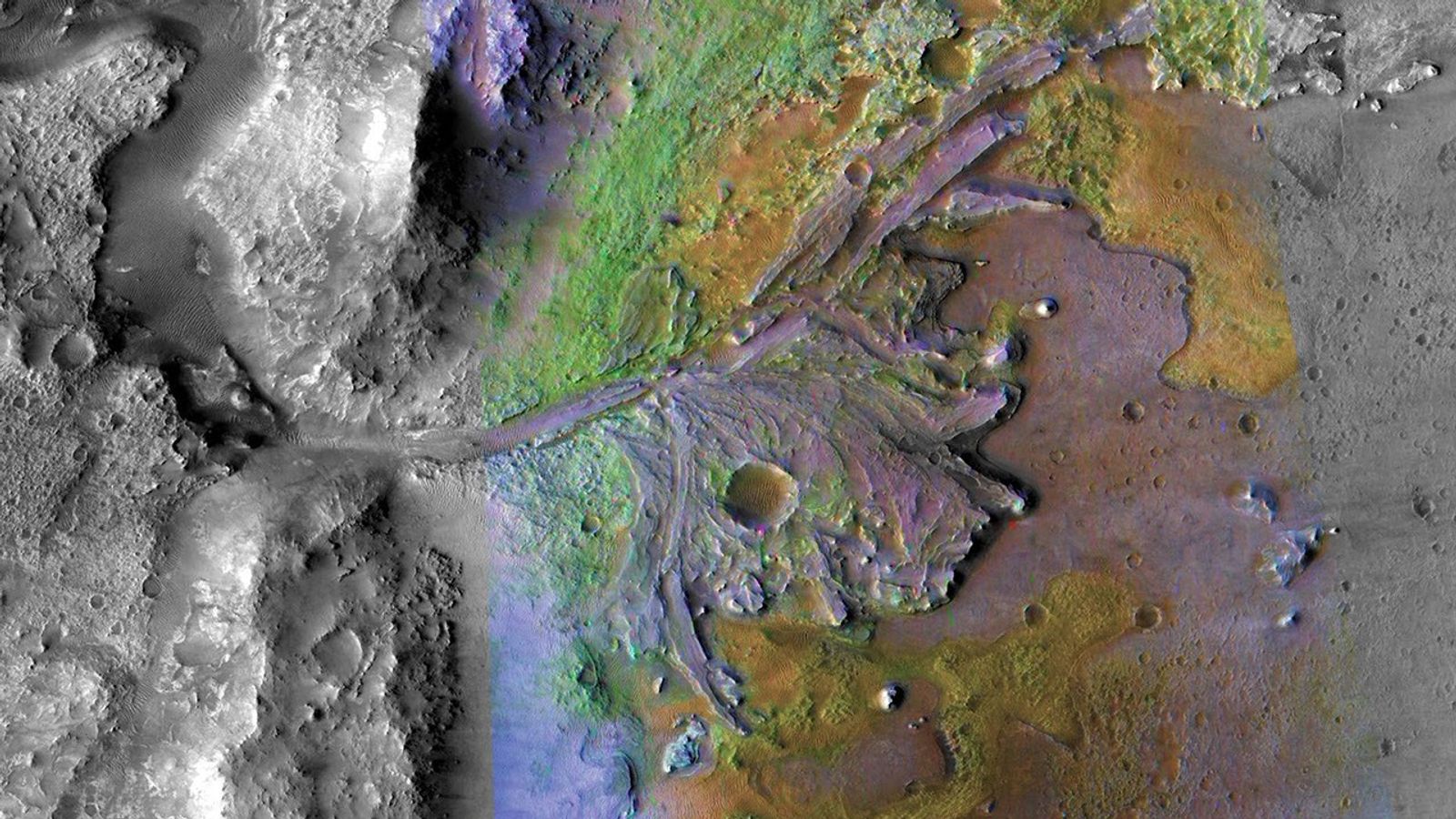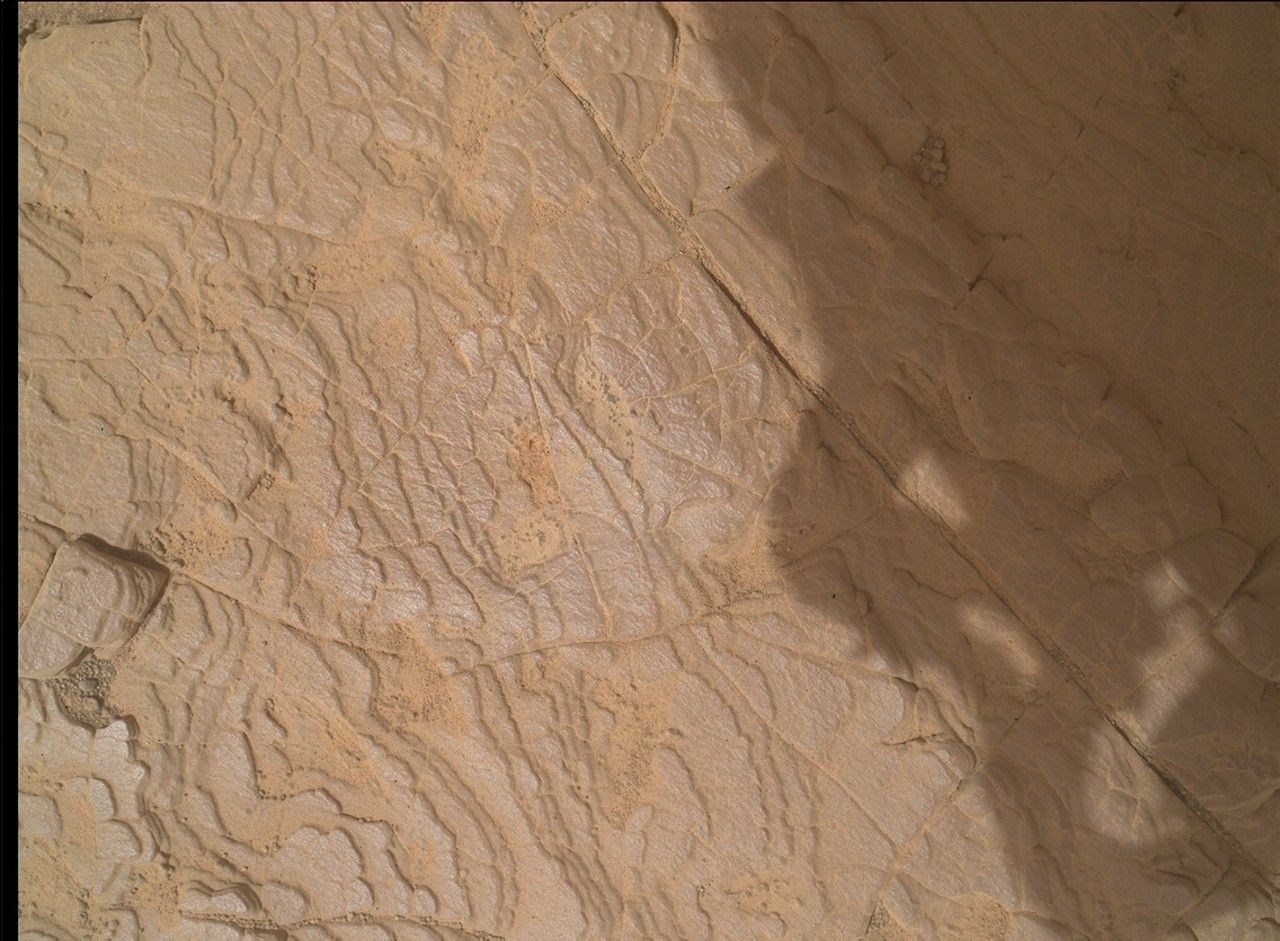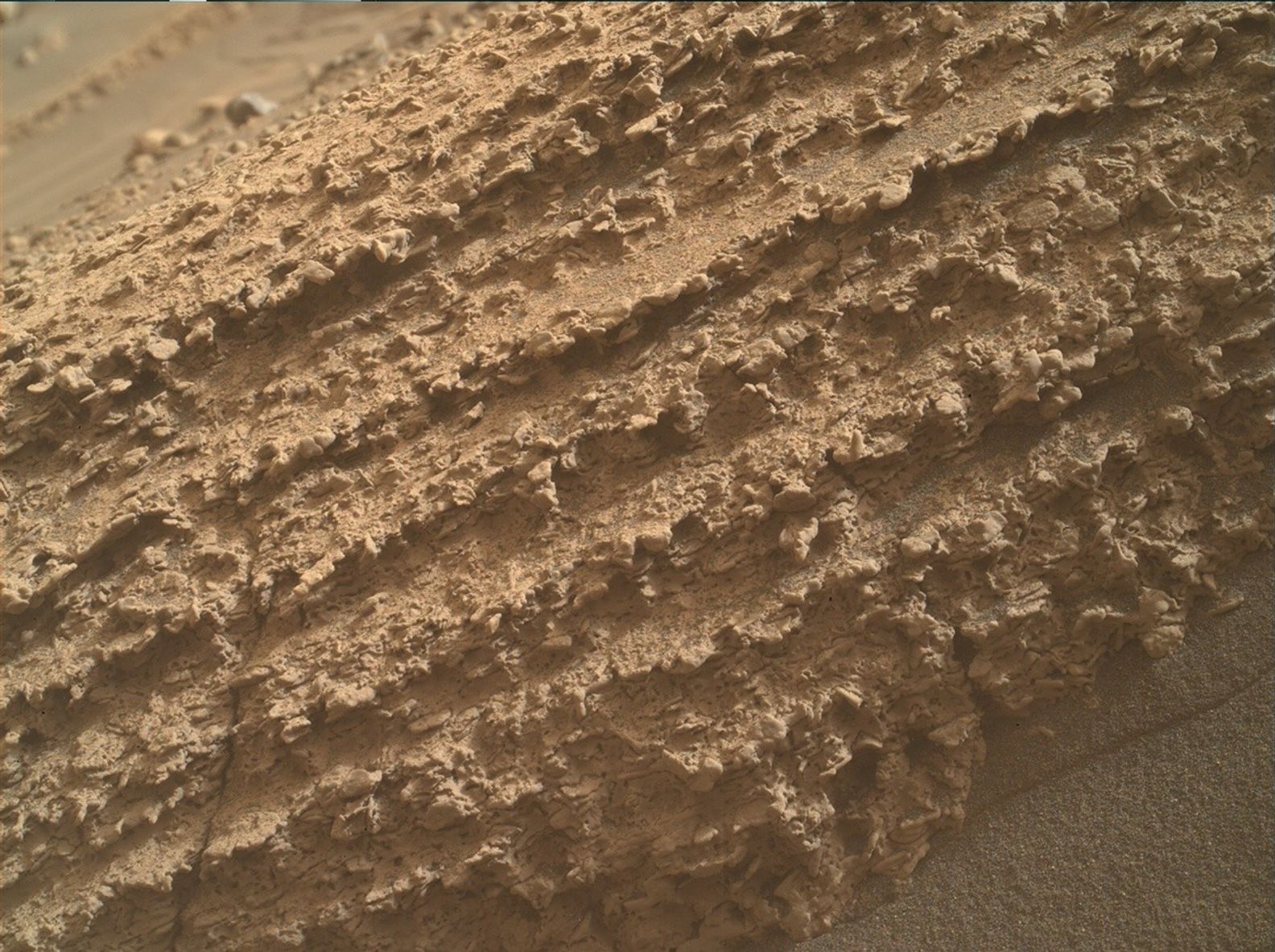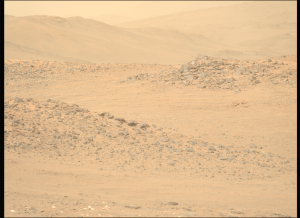Curiosity Navigation Curiosity Home Mission Overview Where is Curiosity? Mission Updates Science Overview Instruments Highlights Exploration Goals News and Features Multimedia Curiosity Raw Images Images Videos Audio Mosaics More Resources Mars Missions Mars Sample Return Mars Perseverance Rover Mars Curiosity Rover MAVEN Mars Reconnaissance Orbiter Mars Odyssey More Mars Missions The Solar System The Sun Mercury Venus Earth The Moon Mars Jupiter Saturn Uranus Neptune Pluto & Dwarf Planets Asteroids, Comets & Meteors The Kuiper Belt The Oort Cloud 3 min read
Sols 4352-4354: Halloween Fright Night on Mars  NASA’s Mars rover Curiosity acquired this image of the target surface feature nicknamed “Reds Meadow,” using its Mars Hand Lens Imager (MAHLI), located on the turret at the end of the rover’s robotic arm. Curiosity captured the image Oct. 31, 2024, at 19:09:10 UTC, on sol 4350 — Martian day 4,350 of the Mars Science Laboratory Mission. NASA/JPL-Caltech/MSSS Earth planning date: Friday, Nov. 1, 2024
NASA’s Mars rover Curiosity acquired this image of the target surface feature nicknamed “Reds Meadow,” using its Mars Hand Lens Imager (MAHLI), located on the turret at the end of the rover’s robotic arm. Curiosity captured the image Oct. 31, 2024, at 19:09:10 UTC, on sol 4350 — Martian day 4,350 of the Mars Science Laboratory Mission. NASA/JPL-Caltech/MSSS Earth planning date: Friday, Nov. 1, 2024
Yesterday evening (Thursday) was Halloween for many of us here on Earth. My neighborhood in eastern Canada was full of small (and not so small!) children, running around in the dark collecting sweets and candy but also getting scared by the ghostly decorations hung at each house. Little did we suspect that our poor rover on Mars was also getting spooked. Curiosity completed about a meter (about 3 feet) of the planned drive before becoming unsettled … scared, if you will! … when its left front wheel got hung up on a rock and stopped moving.
Luckily, we understood this kind of frightened behavior and were able to resume planning today as per usual. That meter was enough to give us a whole new set of targets to choose from. As APXS Strategic Planner this week, I had chosen darker-looking targets in the workspace — “Ladder Lake” and “Reds Meadow” (shown in the accompanying MAHLI image) — earlier in the week. I was happy that bumping backwards by a meter allowed us to reach some of the more typical pale colored bedrock at “Eureka Valley” and a second APXS analysis on “Black Bear Lake,” which is a mixture of both pale bedrock and some darker layers. MAHLI added in a bonus set of images on “Stag Dome,” focusing on small, rougher patches on the pale bedrock.
ChemCam is taking advantage of the short bump, too, adding a passive observation on the brushed Reds Meadow target, analyzed by APXS and MAHLI in Monday’s plan. A ChemCam LIBS target “Hoist Ridge” focuses on a small vertical face of dark material. Two long distance images planned for ChemCam’s Remote Micro Imager (RMI) look at the distribution of rocks along the Gediz Vallis ridge in the distance.
Mastcam is taking several mosaics this weekend (must have gotten extra energy from the Halloween sugar!). Close to the rover, Mastcam will acquire single-frame images of the targets Hoist Ridge and Eureka Valley, and a small mosaic of some surficial troughs just a little further away. Moving further afield, a small 3×1 mosaic (three images in one row) will image the same area as the ChemCam RMI of the Gediz Vallis ridge, and a larger 9×2 mosaic will focus on the faraway yardang unit, where we hopefully will be in a few years.
Then for the really big images: Mastcam will image the whole landscape in a special 360-degree view, so big it needs to be broken into two parts. The first will have 43×4 frames, the second 34×5 frames. These mosaics are huge, so we save them for when we are at a really good vantage point to allow us to capture as much detail as possible for science and engineering planning.
As ever, we continue our environmental monitoring of conditions, with Mastcam and Navcam movies and images looking at dust in the atmosphere above and around us in Gale crater, and watching out for dust devils.
Written by Catherine O’Connell-Cooper, Planetary Geologist at University of New Brunswick
Details Last Updated Nov 04, 2024 Related Terms Blogs
Keep Exploring Discover More Topics From NASA Mars
Mars is the fourth planet from the Sun, and the seventh largest. It’s the only planet we know of inhabited…

Explore this collection of Mars images, videos, resources, PDFs, and toolkits. Discover valuable content designed to inform, educate, and inspire,…

Each robotic explorer sent to the Red Planet has its own unique capabilities driven by science. Many attributes of a…

Mars Exploration: Science Goals
The key to understanding the past, present or future potential for life on Mars can be found in NASA’s four…



 2 min read Sols 4350-4351: A Whole Team Effort
2 min read Sols 4350-4351: A Whole Team Effort
 2 min read Sols 4348-4349: Smoke on the Water
2 min read Sols 4348-4349: Smoke on the Water
 2 min read A Spooky Soliday: Haunting Whispers from the Martian Landscape
2 min read A Spooky Soliday: Haunting Whispers from the Martian Landscape
